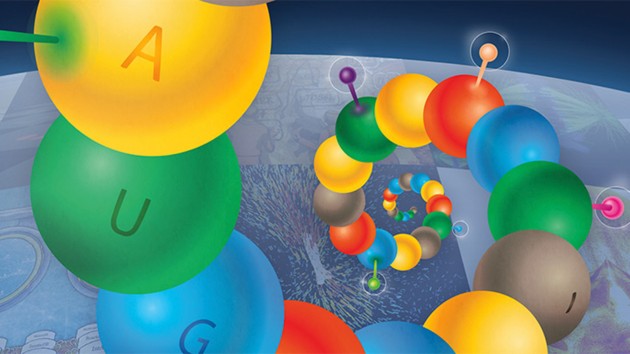Focus |
Collections
Filters
-
Collection Type
-
-
Focus |
 Method of the Year 2015
Method of the Year 2015
Our choice for Method of the Year 2015 is single-particle cryo-electron microscopy. A collection of articles discusses how recent technical advances, especially the development of direct-detection cameras, have enabled this structural biology technique to make impressive leaps in achievable resolution and, in turn, provide new insights about protein function. We also highlight methods to watch in the upcoming years.
-
Focus |
Ten Year Anniversary Special
Nature Methods is ten years old. In this anniversary issue, we highlight our choice of the ten areas of methods development with the most impact on biological research over the past decade, and feature commentaries on a subset of these methods. Visit Methagora to browse Nature Methods papers in these areas.
-
Focus |
Focus on Synthetic Biology
Synthetic biology spans many disciplines and has many different goals but all rely on well-characterized basic tools. In this Focus experts discuss the current status of essential methods, going from DNA synthesis to genetic circuit design to whole genome assembly and how these tools can be deployed for applications from medical research to addressing the origin of life.
-
Focus |
Synthetic biology
Since its inception almost 15 years ago, synthetic biology has evolved into a vibrant and productive field, owing in large part to the use of model microorganisms for the design, creation and implementation of both simple and more sophisticated biological systems. This Focus issue of Nature Reviews Microbiologypresents a set of specially commissioned articles that together chart the technological and cultural developments of the field, provide a framework for the use of emerging synthetic devices for microbial engineering, discuss the use of alternative microorganisms for industrial-scale applications and describe the first successful 'real-world' application that has been achieved. The Focus issue is accompanied by a joint Web Special withNature MethodsandNature.
-
Focus |
Focus on Mapping the Brain
We are entering a new era in the neurosciences, in which development of technology will be in the spotlight. In this Focus, experts outline the different technologies needed to obtain anatomical and functional brain maps across species, and discuss the importance of assembling these maps and what will be needed beyond them, to understand the functioning of the brain.
-
Focus |
Focus on Bioimage Informatics
Explosive growth in the size and complexity of microscopy-based imaging data and the need to extract more quantitative data from it increasingly requires sophisticated image acquisition and analysis methods and software tools. A collection of articles discusses the role of bioimage informatics in microscopy, specific tools that are available, and the challenges and opportunities in the field.
-
Focus |
Special Feature - Five Year Anniversary Special
Nature Methodscelebrates its five year anniversary with commentaries discussing the impact and progress of methodological developments in the life sciences. We also include a fun selection of papers and covers from our pages.
-
Focus |
Focus on Single-Molecule Analysis
Specially commissioned Reviews and a Perspective provide a guide to the maturing field of single-molecule analysis and two original research papers describe complementary advances in nanoscale visualization.
-
Focus |
Focus on mass spectrometry in proteomics
A series of specially commissioned Commentaries, Reviews and Perspectives discuss the use of mass spectrometry in established approaches to proteomics as well as emerging technologies.
-
Focus |
Focus on RNA interference - A user's guide
Eight especially commissioned Perspective articles that discuss practical questions surrounding the use of RNA interference in mammalian cells, as a tool to knock down a specific gene of interest and as a resource for functional genomics screens.
-
Focus |
Fluorescence Imaging
A series of review articles and other content discussing the principles of fluorescence and different imaging modalities along with practical advice.

 Method of the Year 2016
Method of the Year 2016